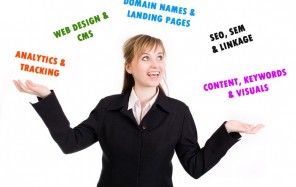As a web-based organisation, and as a consultancy, we have over many years of research and strategy development and web development, been involved in studying our competition and using other sites and magazine articles, publications, university papers etc. as benchmarks for developing our own thoughts and even extending our own thoughts so that we can assist clients and engage in continual learning within Competitive Edge.
Of course, there is a fine line between understanding concepts, undertaking designs and publishing material where there may be ideas and concepts sparked by material, designs and developments already within the marketplace and merely copying these and passing them off as your own creativity and innovation.
Media watch is an organisation on Channel 2 that has grown out of the current practise by many suburban and regional newspapers and even major newspapers of taking articles from publications here and abroad and republishing them with slight changes under the signed hand of a contributing editor. Many of the newspapers are constantly brought to ‘heel’ for this practise.
In the marketplace today, however, there are serious consequences attached to breach of copyright and passing off material as your own or even downright plagiarism.
We have had a recent example of this. We undertook a brief for a New Zealand company and travelled to New Zealand to attend a meeting and to spend time with a client and to outline how he would approach the development of a fairly sophisticated and integrated website for their organisation. They responded by giving us the business and sending a deposit cheque so that we could start on the business.
Unfortunately, over time they did not deliver the material required to get the process underway and within six months they wrote an e-mail saying that they had decided not to proceed and could we send the money back. This is a breach of contract and we’re probably within our rights in not sending the money, however we felt that we’d persist with them and give them more time to see what they needed, and how they could use our services so things were left up in the air.
During this time, unbeknown to us, in the early stages, they had taken a site that we had developed on the mainland here in Victoria and virtually copied the outline of this website and they had even used the same colours, the same navigation headings and without much disguising and, without much disguising, had taken a map that had been developed and even the graphics on the map and placed this on a website designed by ‘unknown hand’. They are now demanding their money back.
This led me to look at what is the situation with copyright, especially web-pages, because some of our clients would not like to have their sites copied completely and we also feel it’s a responsibility of ours to point out to other clients who are looking at competitive activities and benchmarking their sites in the marketplace, the dangers of copying competitive sites or being ‘too close’ to the creative hand and visual representations of their competitors.
We are not against understanding the competition or even benchmarking against the competition, but we are against people taking others concepts and creative and making them their own and passing them off as theirs.
The law in the UK that sets the precedent for which the Commonwealth law and laws in New Zealand and in other Commonwealth countries are drawn, says that if a concept or design or thought or idea is ‘confusingly similar’, then this is breach of copyright and/or plagiarism. This sounds vague, but now the law is becoming very precise and it will not entertain copyright or ‘passing off’ without awarding serious damages or penalties that can include prison, in the most dire circumstances.
Aboriginal artists are one group that have recently been part of this new move and there are now pieces of art that actually have attached to them the requirement that the original artist receive a percentage of any increase in the value of this artwork as it goes through successive owners and auctions/sale over time.
Back to the client that we were talking about. This client has engaged in serious replication of our work, and at no time has acknowledged the source of the design, the creativity or the original thought, and it could be said that they used the briefing stage to gain ideas, and possibly, always had in mind that they would not be using our company as the implementer of those ideas.
Apart from the breach of contract in terms of payment and then withdrawal after many months of the business, and then their demand for repayment of the initial deposit, they have with complete knowledge of a similar site on the mainland, published and utilised their website with borrowed designs, graphics, etc.
If you find that you have competitors copying your website, so that the design, navigations, colours, etc are ‘confusingly similar’ to yours, or directly a plagiarism of major proportions, then we would like you to tell us about them because we would assist you to prosecute and to make sure that these people cease and desist such actions.
If you are thinking about copying a site, then don’t.
If you are employing a web-designer or web-based organisation, with skills such as ours, then ensure that, when you finish the website, that you get a sign-off on the website so that you have ownership, because unless you do this, then the creative aspects and the designs aspects of the site including the total layout and look belong to the original creator or artist just in the same way as a photograph belongs to the original photographer, and you will have no intellectual copyrights in regard to that piece of work.
– David Higginbottom


